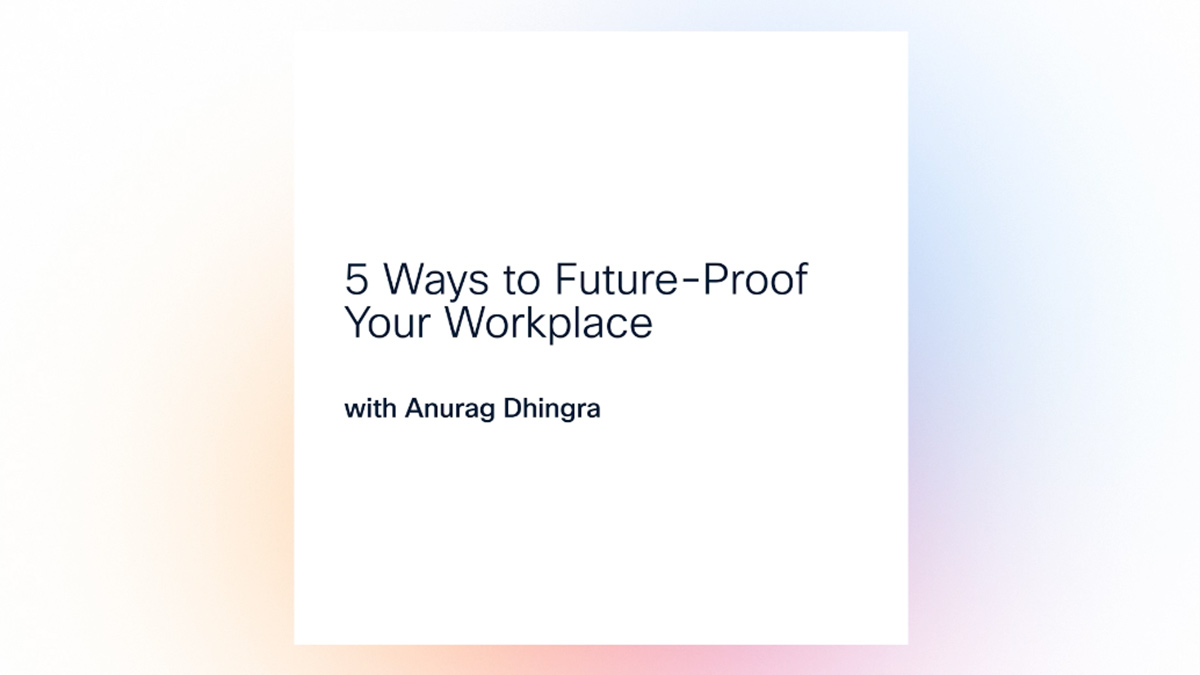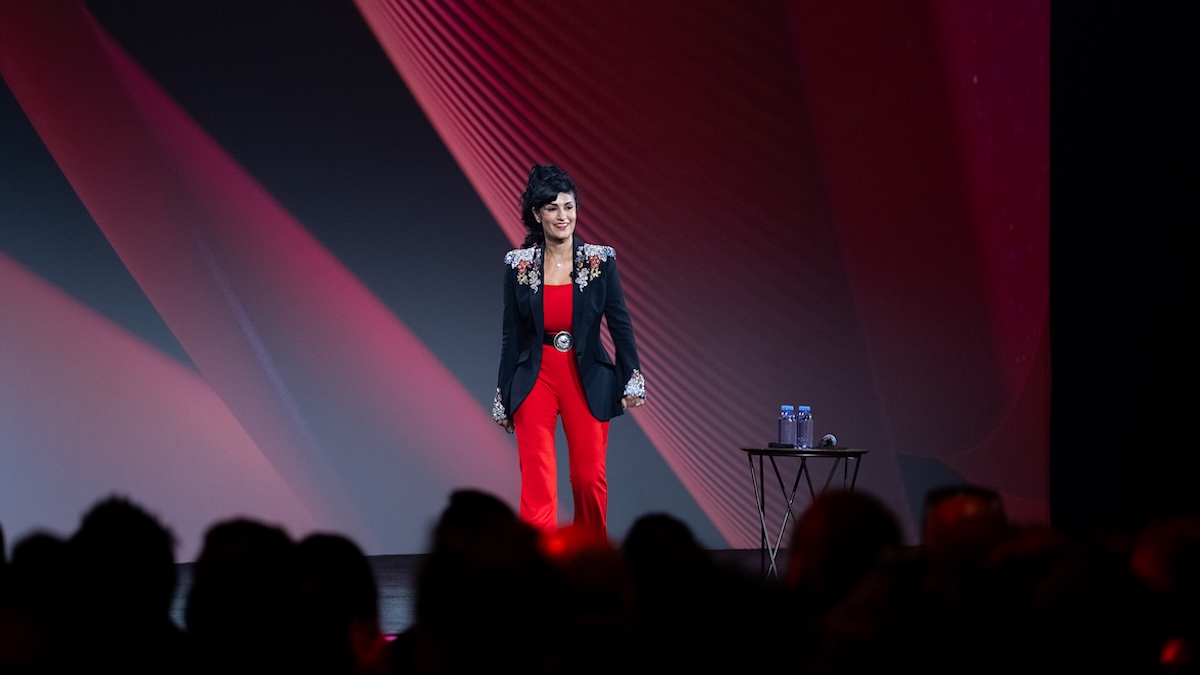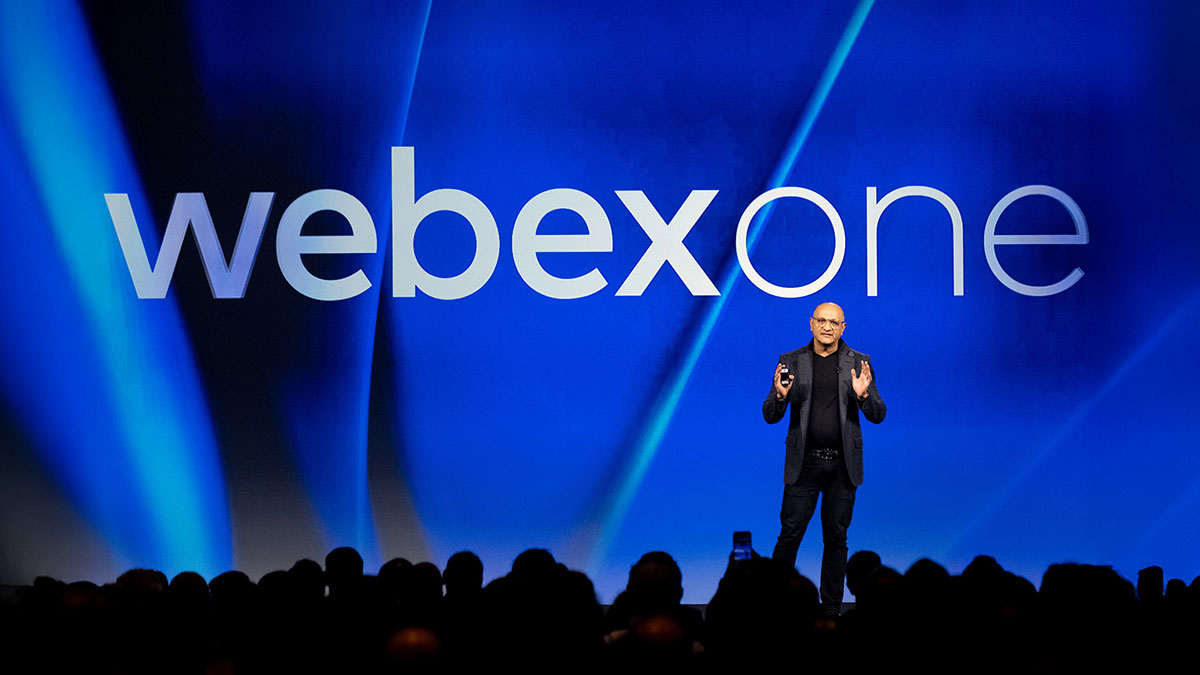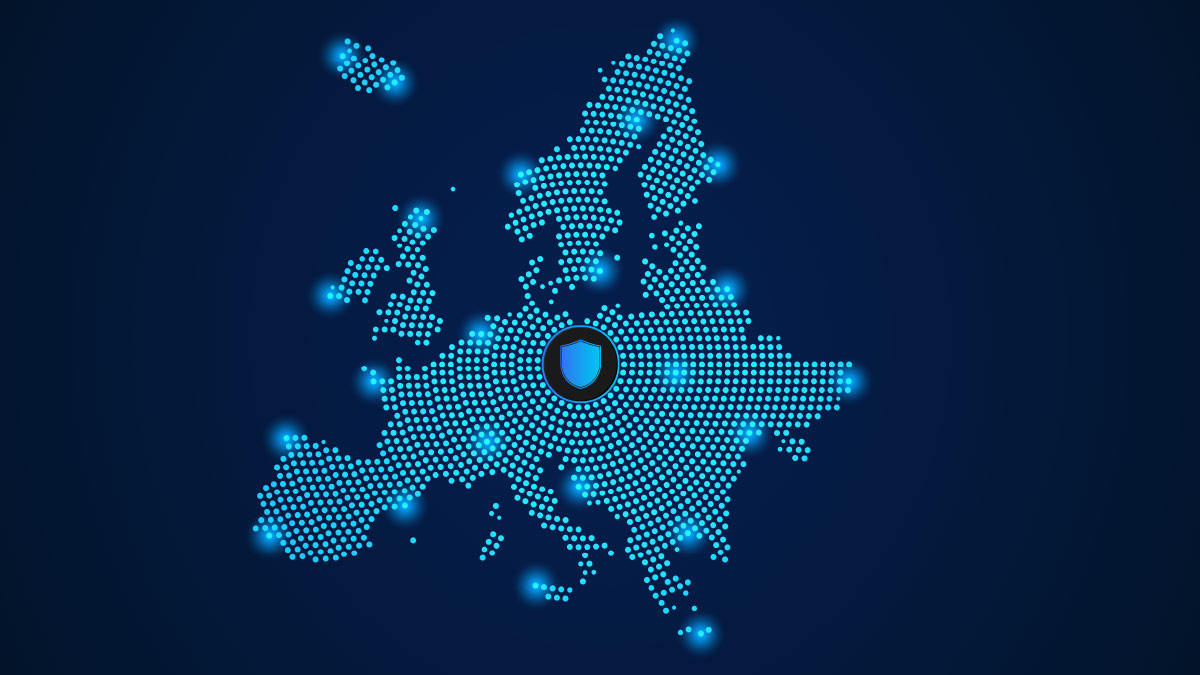Between AI’s vast promise and its real-world value, organizations face no shortage of hurdles.
That’s where Cisco comes in.
With a portfolio that spans networking, security, collaboration, and observability — as well as the agentic AI and platform capabilities to connect them seamlessly — Cisco is ready to empower and guide organizations towards the future of work (which is arriving right about now).

Prior to Cisco’s Webex One event in San Diego this week, we spoke with Anurag Dhingra, Cisco’s SVP and general manager for enterprise connectivity and collaboration, for his insights on how organizations can navigate the challenges and capture the tremendous value of AI.
Thank you, Anurag! AI represents a major transition for organizations. You speak with a lot of Cisco customers, what’s the temperature out there?
Thanks, Kevin. Most organizations are very excited about the potential that AI, especially agentic AI, holds for their businesses. And they are not only looking at productivity gains but hoping that AI can help their employees connect with one another better — and with their customers. So, there's generally a lot of enthusiasm and optimism around the potential of the technology.
I’m sure they are sharing their challenges around AI as well.
Yes, there are questions around intellectual property protection. And around securing the workplace. So, how do you balance the potential of the technology with the risks of the technology? But this is why customers are looking at Cisco as a strategic partner. Cisco is uniquely positioned to help them navigate this transformation.
Cisco’s vision for Connected Intelligence is a big part of helping them navigate this transition.
Yes, Connected Intelligence is people and AI working in harmony, transforming how we work, connect, and create. Our vision for the future of collaboration is seamlessly linking people and AI to make work more meaningful, productive, and human.
First, we’re connecting people with people by elevating human interaction through leading collaboration software, devices, and AI that makes every experience better. With purpose-built AI systems on every device, we’re connecting people with AI, empowering individuals to manage teams of AI and fitting naturally into workflows. And connecting AI with AI to deliver systems that work together across environments to unlock new levels of productivity.
So, for all the technology involved, it’s really about unlocking human potential.
Yes, human collaboration is even more important in an AI first world. AI can be a huge force multiplier for people. It'll automate tasks that free up humans to excel in things that are uniquely human — creativity, relationship building, innovation, aligning towards a shared common goal, and ensuring that AI is aligned with ethical models, values, and principles.
How is Cisco — and its collaboration tools — creating a more seamless, human experience?
Our technology is very focused on ensuring that people can make better connections with each other. And that's not just true of employees talking to each other in a workplace. It's also about how they interact with their customers. AI may unlock productivity, but it's really human collaboration that unlocks creativity to make that progress happen.
Let’s talk about IT teams. How is Cisco helping them?
IT teams are in a very difficult position. IT budgets are under pressure, and there's a very clear skills shortage right now in the IT industry. As companies are looking to deploy AI at scale, they are dealing with increasing complexity. Our viewpoint is that AI can be leveraged to simplify much of this complexity.
That includes agentic AI, of course.
Yes, that is one of the key ways we are helping IT. We are leveraging AI agents to run the infrastructure autonomously and bring in humans for guidance where they need to. This is one way to offload a bunch of routine tasks, and support IT teams as try to scale out AI solutions for the whole organization.
How else is Cisco differentiated in agentic AI?
We are applying AI agents in a cross-domain fashion. Networking, security, collaboration, and observability are all in a single platform. Our customers need insights across the full infrastructure, from a user to the application. And we offer an end-to-end viewpoint of what's happening, even if it stretches out across the internet to where customers don’t control it. That is the promise of Agentic AI. And new agentic capabilities like AI Canvas can plug in our collaboration portfolio. This is a true differentiator for Cisco, given the breadth of our portfolio and our ability to connect so many dots in a very autonomous manner.
Agentic is also playing a role in customer service.
Yes, Webex Contact Center leverages a completely autonomous agent that speaks like a human, listens like a human, talks like a human and can automate routine tasks that typically human agents would do. And when human agents get involved, it is to handle the more high-stakes or complicated challenges.
You touched on security. How is Cisco securing the AI revolution?
The traditional approach to security — there's a firewall, and there's a few centralized enforcement points for security policy — just doesn’t work anymore. Cisco is imagining security completely differently by embedding security into the fabric of the network. That way, every network device becomes an enforcement point, and policy can be defined in one place — the network can enforce the policy in context and in place.
Of course, security is critical in collaboration.
Yes, we are thinking about things like deep fakes and what identity means in the context of collaboration today. Because of that, we're building solutions that leverage end-to-end encryption to secure the information flow, and then we are layering on identity to ensure that only those people who should have access to a meeting, to a recording, to a message, are validated, authenticated, and authorized. And then we're building capabilities to detect deep fakes, to ensure that a person is really a human being. We’re offering this together with secure AI, all while leveraging Cisco's full AI Defense product portfolio. It’s a holistic network-based security story that only Cisco can deliver on.
Looking forward, how optimistic are you that AI will be a positive force for industry, humanity, and the planet?
AI is a massive technology change, and it is already disrupting industries. Like every major technology shift before AI, there will be some pain that comes with that. The reality is that certain types of roles will become obsolete. At the same time, new types of roles will be created. And humans will focus on problems that were previously unsolvable because of either a shortage of resources or a shortage of time. I'm very optimistic that this is going to be a positive force for humanity and positive force for society.
How can Cisco continue to support that positive vision?
Cisco is the trusted AI infrastructure company for the AI era. As enterprises rush to harness AI in the workplace, we are helping our customers navigate this transformation. We also lead the Workforce AI Consortium, which includes Google, Microsoft, Intel, and others, to spur collective effort towards addressing the AI skills gap. And of course, through our global Cisco Networking Academy, we invest in the upscaling of people as well. By educating the workforce of tomorrow, together with our innovations, I believe we can make a big difference in the world.





